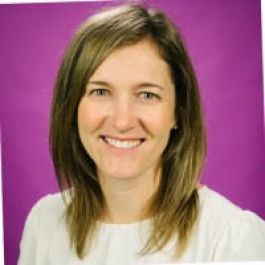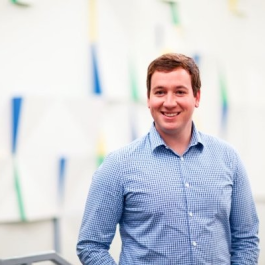
Behind every great product is a great product team.
As a product team grows, how you build and structure it becomes increasingly important — but it’s more than just making additional hires. In order to successfully scale a product team, the bigger picture needs to be taken into consideration.
For example, at e-commerce and healthtech company Walgreens, the product team’s bigger picture means creating an open ecosystem for its customers. “Our vision is to create a consumer-centric, technology-enabled healthcare platform that provides a simple, delightful experience for users, improves health outcomes and lowers costs for the system,” Vid Tekriwal, health information product lead, said.
The product team at technology and logistics company project44 follows a similar bigger-picture structure. “Our team is part of a bigger product and services organization that allows us to apply a more customer-centric, outcome-based approach to everything we do,” Jeff Love, senior product manager, said.
Built In Chicago caught up with Tekriwal, Love and a few other product leaders around the city to gain insight into the structure of their product teams, how it has evolved and what they look for when bringing new members on board.
Using its proprietary software “ALEX,” Jellyvision helps customers make smart decisions about their health, benefits and finances. Amy West, senior vice president of product, said that in order to best serve its customers, Jellyvision’s product team is broken into five key areas: product leaders, strategy and market discovery, research and insights, data science and customer success.
What is the current structure of your product team?
Our product team at Jellyvision includes five key areas: product leaders, strategy and market discovery, research and insights, data science and customer success. We also recently re-aligned our product managers to focus on problems to solve versus components. This structure is optimal for us right now because it allows our talented people to focus and learn at the same time. Additionally, it allows us to quickly scale as we spin up new teams to solve new problems. There are support structures in place to allow product managers to focus on problems worth solving in great detail while being able to have the support and direct access to experts across strategy, research and data science to help them move faster and smarter.
Our greatest asset is our collective and multiplicative brains and, therefore, maintaining diverse thinking is my number one priority.”
How do you envision this structure evolving in the future?
I expect in the future we will spin up new product roles when there is enough evidence to suggest that there is a new problem worth solving, an addressable market is identified and we have the right to win in that space.
I’m always thinking about how to set up healthy people-manager structures in addition to building teams with diverse experience and skills. People need coaching and development, which takes time for managers. If we under-invest in the right manager to team ratios, everyone loses.
What’s the most important consideration for you when adding new members to your team?
There are a few non-negotiable soft skills for product people in my experience (such as communication and stakeholder management) but otherwise, the most important consideration is dependent on the task at hand and the balance of the collective skills across the team. I believe that the most effective teams are diverse in background, experience and skills. If the team is leaning heavy on design thinking but light technically, that’s a problem. On the other hand, if the team is leaning heavily on financial acumen, but light on customer success, that’s not great either. Our greatest asset is our collective and multiplicative brains and, therefore, maintaining diverse thinking is my number one priority.
Tech and logistics company project44 provides advanced supply chain visibility to shippers and third-party logistics firms. The company’s product team is structured in “product squads,” allowing for each team to focus on a specific area that can serve multiple products, Senior Product Manager Jeff Love said.
What is the current structure of your product team?
The product team at project44 is a part of a bigger product and services organization that allows us to apply a more customer-centric, outcome-based approach to everything we do. The team structure aligns well with one of our core values, which is “Obsessing over the customer.” Our team is structured in “product squads,” popularized by Spotify, including product, engineering, design and business representation to ensure we keep the customer at the center of everything we build. This type of structure is cross-functional and highly collaborative, meaning each team focuses on a specific area that can serve multiple products across our portfolio. We align these product squads to customer segments and our key business goals.
How has this structure evolved as your team has grown?
As the team has grown, we have evolved from a dedicated product manager per product or service to the product squads structure. Having one product manager per product had its advantages but as we have expanded our very complex and diverse portfolio of customers, product squads have become essential for owning the product strategy and meeting customer needs. We also invested in product operations (we are hiring!) who serve as the connective tissue between those building products and our customer-facing teams. Being in a high-growth company, we welcome changes, but our goal is to provide each product manager the opportunity to own a segment or problem-space and positively impact key performance indicators (KPIs) — that outcome-first approach excites our group.
I really look for curiosity and someone that is excited to roll up their sleeves to find solutions to complex problems.”
What’s the most important consideration for you when adding new members to your team?
It really depends on the role. Being an API-first company, there are certainly roles that require a more technical background and we always appreciate folks that share a passion for transportation and logistics, but it’s not required.
I really look for curiosity and someone that is excited to roll up their sleeves to find solutions to complex problems. A good product manager must also be hyper empathetic towards the customer. All these skills must be built on the foundation of great communication — we interact with so many different teammates, stakeholders, customers and prospects. PMs must know their audience and communicate effectively.
DigitalMint empowers underserved and underbanked populations by utilizing digital currencies as a tool for financial access and inclusion. When looking to hire new engineers, Director of Technology Matt Lane looks for two key characteristics: a willingness to learn and critical-thinking skills.
An insatiable curiosity and willingness to learn is the best medicine to overcome software engineering challenges.”
What is the current structure of your product team?
One of our most exciting product teams is building a mobile app targeting a wide variety of consumer phones. We charge our UX designer to lead the design and determination of how we can best serve our mobile customers. Our application engineers shape our designers’ dreams into a real, tangible product. And with phones in hand, our QA engineers ensure the design and product meet a high standard of accessibility, features and reliability. Complex products take skilled teams, but an on-the-ball product manager orchestrates the many talented voices in the room to put the idea of what we need into reality and in our customers’ hands.
How has this structure evolved as your team has grown?
Like most small companies, in order to succeed, employees must wear a lot of hats. That’s given our work family the opportunity to discover what they are best at and grow into their role at DigitalMint. But as the company grows in size, we hire more for specific roles. Our challenge is to fill our specific needs while encouraging diverse skills and work with people across the company. The larger our teams get, the more opportunities we have to mix and match engineers and projects to keep our staff challenged and engaged.
What’s the most important consideration for you when adding new members to your team?
There are two main characteristics that I’ve had resounding success in determining an engineering hire. First and foremost, all engineers must always have a willingness to learn. Every expert in their field runs into unexpected problems on a nearly daily basis — it’s the nature of our work. An insatiable curiosity and willingness to learn is the best medicine to overcome software engineering challenges. And second, an engineering candidate must be able to demonstrate critical reasoning. We work with purely logical machines that do not guess or estimate. Any engineer who is curiously logical rather than swiftly frustrated will always find success.
Modern consulting firm Slalom focuses on strategy, technology and business transformation to best serve its customers. According to Damyant Gill, practice area director, Slalom customizes its product teams to align with the client’s and project’s needs.
What is the current structure of your product team?
Slalom builds modern software in a way that is intended to reflect the ultimate objective: impacting our customer’s customer. Building great technology products is the core of what we do.
We partner with our clients to understand their business and build products that impact their customers — and we do so across industries. Recently, we’ve completed work on products that aid people with diabetes. Another recent project was developing an app to enable an exceptional travel experience.
We’re always looking to build products that are frictionless, viable and feasible. We construct our teams around these core product focus areas and help develop our teams’ strengths in each of these elements. For example, an experience design expert ensures desirability and a frictionless experience; a solution owner informs market and feature viability; and a technical engineer (cloud, DevSecOps, app development, data and analytics, QE, SRE) builds for feasibility. Our solution owners, a unique role to Slalom, combine the strengths of business analysts, product owners and scrum masters.
How has this structure evolved as your team has grown?
Our core team structure for individual scrum teams has largely been the same. However, we always customize those teams to the project and our client’s needs.
What’s unique about Slalom’s approach is that we’re always thinking about how we can make sure that our clients’ team is prepared to maintain, support and scale the product. We mitigate change risks to sustain a great experience for our customers. One way that we do this is by embedding our team members seamlessly into client teams, as well as creating teams where clients play specific roles. This creates a lot of opportunities for knowledge transfer — and ultimately that supports better outcomes for the product and positively influences user adoption.
Slalom’s culture is one of learning and collaboration. We look for alignment with our core values when hiring.”
What’s the most important consideration for you when adding new members to your team?
Slalom’s culture is one of learning and collaboration. We look for alignment with our core values when hiring: “Drive connection and teamwork,” “Fuel innovation and growth,” and “Stay humble and curious” are a few values that our product teams really exemplify.
We are working with clients across industries on innovative ideas and complex technical projects. New members need a foundational knowledge of tech so that they can start working fast. However, it’s equally important that you demonstrate consistent curiosity, a readiness to learn new skills, and the drive to collaboratively solve real-world problems.
People that succeed at Slalom show a level of business acumen and technical curiosity, whether it be cloud-native development, DevSecOps, data engineering and analytics, quality engineering or SRE approaches that deliver client business outcomes. This approach to teaming and development helps us create the best outcomes for our clients and their customers.
This mindset of curiosity and continuous learning helps create a positive work environment and future learning opportunities. For example, our hackathons allow team members to create great products and solution concepts, many of them solving real-world problems for local nonprofits. In 2020, we had three Chicago-based teams advance to Slalom’s global hackathon — and one of them won! Many solutions sparked from hackathons have gone on to become capabilities, like our IoT lab and immersive (AR/VR/MR) product development capabilities.
Horizon 3, a healthcare innovation team at Walgreens, was created to ensure the company was able to deliver the best possible products and experiences to its customers, Health Transformation Product Lead Vid Tekriwal said.
What is the current structure of your product team?
Horizon 3 is a healthcare innovation team within Walgreens Boots Alliance created and funded as a vehicle to reimagine the healthcare ecosystem. The ultimate goal is to make healthcare simpler and more user-friendly for the consumer.
Our vision is to create a consumer-centric, technology-enabled healthcare platform that provides a simple, delightful experience for users, improves health outcomes and lowers costs for the system. Driven by the structure of the healthcare industry, our product will serve the needs of multiple external user groups, including patients, caregivers, payers, providers and suppliers, as well as internal user groups, including coaches, health advisors, customer service representatives, clinicians and administrators.
The structure of our team reflects the shape and complexity of our product. We come from a diverse range of product backgrounds, which helps enable and challenge each other to think of our user problems from different perspectives. We’re currently a lean team, organized according to the users, channels and the content of the experiences we aim to serve. Each product manager currently wears many hats, including working through the end-to-end product strategy and execution for the particular capabilities and features they are responsible for and making strategic decisions that inform design and implementation. We have a highly collaborative and cross-functional relationship mode of working to ensure that we’re ultimately optimizing what’s best for the user. In order to scale quickly, we have augmented our team with external resources and opened full-time roles to hire behind them for the long term.
We look for a combination of experience, a willingness to be wrong, try and learn, and an insatiable appetite to get out there and deliver as a team.”
As a team, we operate closely with our commercial partners to understand their population needs, so we’re in the best position to design solutions that address these needs and unify the experience. In collaboration with our development partners, we have adopted an Agile methodology, which allows us to effectively navigate and break down the components of the product. In two-week focused periods, we work as a cross-disciplinary team to refine, design and sequentially build the individual capabilities of the product. This close-knit structure with user experience design and research and engineering allows us to iterate rapidly and gather targeted feedback from real users that can directly inform the product, design and implementation of each feature.
Our cross-functional and collaborative approach, with tight feedback loops from our users, is particularly important given the nature of our work. We are creating an innovative product in a highly complex space. There are some things we know from previous collective experience and observing others in the space, but there are still many unknowns that we’ll manage and navigate. We, therefore, optimize for learning and iteration, with a clear focus on the users we are serving.
How has this structure evolved as your team has grown?
As a small team, as is typical in a startup, we tend to be generalists and we each cover many different topics. As the team grows, the structure will evolve to encapsulate greater specialization. We’ll have individual product managers dedicated to specific aspects of the product, so they’ll have an opportunity to build a depth of expertise and contribute uniquely to the team.
What’s the most important consideration for you when adding new members to your team?
When we hire new people, we look for a combination of experience, a willingness to be wrong, try and learn, and an insatiable appetite to get out there and deliver as a team. Healthcare technology is a specialist space, and direct experience and technical knowledge are extremely valuable. Somewhat paradoxically, we also look for a certain open-mindedness and receptivity to new information and new perspectives.
As such, we want to bring the best of other industry approaches to bear on healthcare, so we don’t just hire healthcare expertise but rather across all industry segments. We look for someone who embraces the unknown and the ‘art of the possible’ and challenges the status quo. The problem we are solving is vast — no one can possibly have all the information or all the answers — so we look for a certain humbleness, along with a willingness to admit what we don’t know, clarity on what we do know and someone who embraces learning from each other. At the end of the day, we want our product managers to jump out of bed in the morning and be passionate about the opportunity to make a bigger impact on the customers we serve.
H3 offers a unique opportunity to join a team in the formative stages of a big mission and make an impact on millions of people’s lives. This is a startup environment, supported by a trusted brand, where you get to work with a fun, collaborative team in a culture that encourages creativity, design thinking, risk-taking, learning and growth.

















